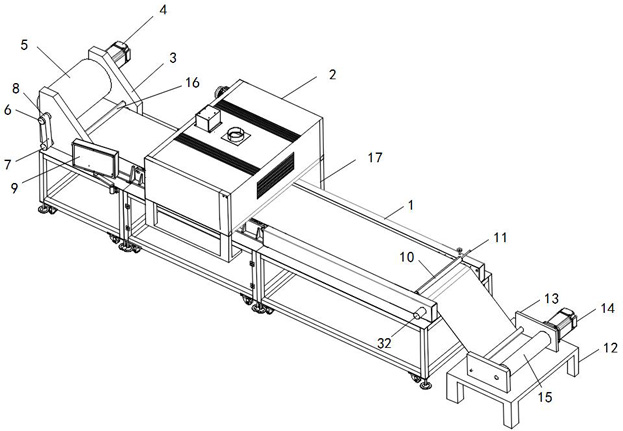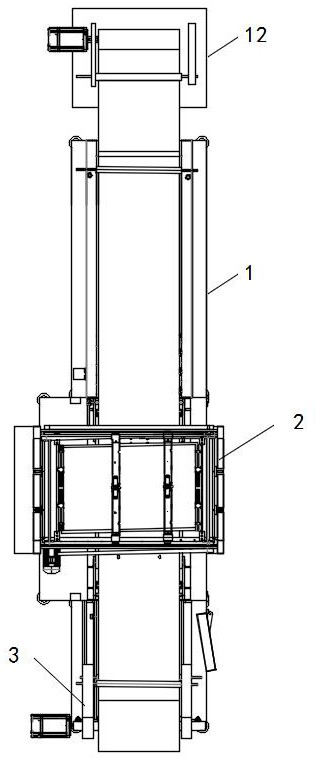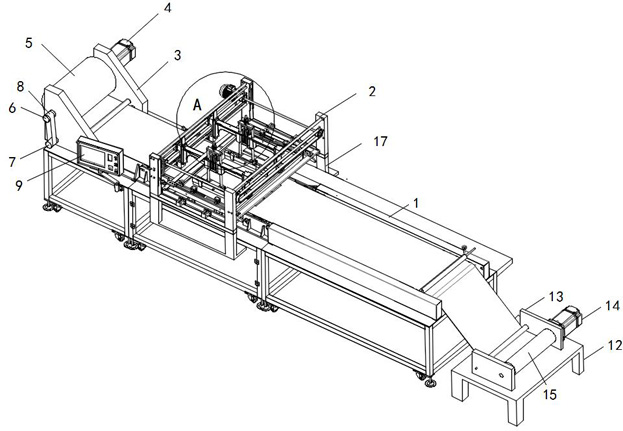A printing device for textile fabrics and its working method
A textile fabric and printing technology, applied in the field of textile fabric printing equipment, can solve the problems of fabric contamination, fabric folds, low tension, etc., and achieve the effect of ensuring printing effect and uniform tension
- Summary
- Abstract
- Description
- Claims
- Application Information
AI Technical Summary
Problems solved by technology
Method used
Image
Examples
Embodiment Construction
[0027] The technical solutions of the present invention will be clearly and completely described below in conjunction with the embodiments. Apparently, the described embodiments are only some of the embodiments of the present invention, not all of them. Based on the embodiments of the present invention, all other embodiments obtained by persons of ordinary skill in the art without creative efforts fall within the protection scope of the present invention.
[0028] see Figure 1-5As shown, a printing device for textile fabrics includes a base 1, a discharge rack 3, a printing box 2, and a receiving rack 13. A conveyor belt is installed on the top of the base 1, and one end of the conveyor belt is socketed with the main transmission wheel 7. And the other end of the conveyor belt is socketed with the auxiliary transmission wheel 32, the discharge rack 3 is fixed on the top of one end of the base 1, and a discharge roller 5 is installed on the discharge rack 3, and one end of the...
PUM
 Login to View More
Login to View More Abstract
Description
Claims
Application Information
 Login to View More
Login to View More - R&D
- Intellectual Property
- Life Sciences
- Materials
- Tech Scout
- Unparalleled Data Quality
- Higher Quality Content
- 60% Fewer Hallucinations
Browse by: Latest US Patents, China's latest patents, Technical Efficacy Thesaurus, Application Domain, Technology Topic, Popular Technical Reports.
© 2025 PatSnap. All rights reserved.Legal|Privacy policy|Modern Slavery Act Transparency Statement|Sitemap|About US| Contact US: help@patsnap.com



